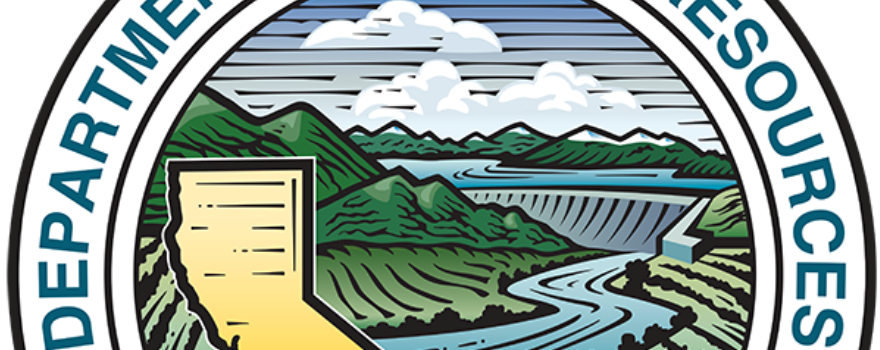From the Department of Water Resources:
The Department of Water Resources (DWR) today announced an initial 2016 allocation of 10 percent for customers of the State Water Project. Depending upon the amount of rain and snow that reaches California this winter, the allocation may be increased or decreased. If dry conditions continue into a fifth year of drought, DWR may reallocate State Water Project (SWP) supplies to meet critical human health and safety needs.
Despite early season storms, California continues to face severe water shortages with record low levels in some reservoirs, including Folsom Lake near Sacramento.
Lake Oroville in Butte County, the SWP’s principal reservoir, is dipping toward its record low of 882,000 acre-feet set on September 7, 1977. Oroville, which supplies a percentage of the water for 25 million Californians and just under a million acres of irrigated farmland, today is holding only 929,151 acre-feet, 26 percent of its capacity of 3.5 million acre-feet and 43 percent of its historic average for the date. Shasta Lake north of Redding, California’s and the federal Central Valley Project’s (CVP) largest reservoir, is at 29 percent of its 4.5 million acre-foot capacity, 49 percent of its historical average for this time of year. San Luis Reservoir, a critical south-of-Delta pool for both the SWP and CVP, is at 19 percent of its 2 million acre-foot capacity, 32 percent of average for the date.
Folsom Lake, a CVP reservoir, is holding a record low 136,980 acre-feet of its 977,000 acre-foot capacity. The reservoir’s previous low was 140,600 acre-feet on November 20, 1977.
Low reservoir levels mean there is plenty of room for runoff from El Niño-driven storms should they develop, but even an extremely wet winter would not return conditions – especially groundwater levels – to normal after four consecutive dry years.
“No matter how hard it’s raining, we need to remember to use water wisely and sparingly,” said DWR Director Mark Cowin. “Our historic drought has lasted for years and isn’t going to quickly be washed away.”
The 29 public water agencies that receive SWP water (State Water Project Contractors) requested 4,172,786 acre-feet of water for 2016. Under today’s initial allocation, they will receive 422,848 acre-feet. For most agencies, that amounts to 10 percent of the supplies for which they contract with DWR.
It is important to note that nearly all areas served by the SWP also have other sources of water, among them streams, groundwater and local reservoirs.
DWR is hopeful that today’s SWP allocation, made before the wettest months, will increase as storms bring rain and snow to the state. But drought may continue to be the reality.
This calendar year’s (2015) 20 percent allocation is the second lowest since 1991, when agricultural customers of the SWP got a zero allocation and municipal customers received 30 percent. In 2014, SWP deliveries were five percent of requested amounts for all customers.
The last 100-percent SWP allocation – difficult to achieve even in wet years because of Delta pumping restrictions to protect threatened and endangered fish species – was in 2006. SWP allocations in recent years:
2014 – 5 percent
2013 – 35 percent
2012 – 65 percent
2011 – 80 percent
2010 – 50 percent
2009 – 40 percent
2008 – 35 percent
2007 – 60 percent
Governor Edmund G. Brown Jr. declared a drought state of emergency on January 17, 2014 and followed up with statewide water conservation mandates. Since then, the state has been swept by drought-fueled forest fires, vast tracts of farmland have been fallowed and some communities have been left scrambling for drinking water.
Long-range weather forecasts are uncertain, and there is no way to tell if this winter will alleviate or deepen the drought. Conservation remains our most reliable drought management tool.
DWR’s California Data Exchange Center Web sites show current water conditions at the state’s largest reservoirs and weather stations.
- Reservoirs: http://cdec.water.ca.gov/reservoir.html
- Precipitation: http://cdec.water.ca.gov/snow_rain.html
- Snow: http://cdec.water.ca.gov/snow/current/snow/index.html
California has been dealing with the effects of drought for four years. To learn about all the actions the state has taken to manage our water system and cope with the impacts of the drought, visit Drought.CA.Gov. Every Californian should take steps to conserve water. Find out how at SaveOurWater.com.
——————————————–
Sign up for daily email service and you’ll always be one of the first to know!
- Sign up for daily emails and get all the Notebook’s aggregated and original water news content delivered to your email box by 9AM. Breaking news alerts like this one, too. Sign me up!
 Maven’s Notebook
Maven’s Notebook
constantly watching over the world of California water


